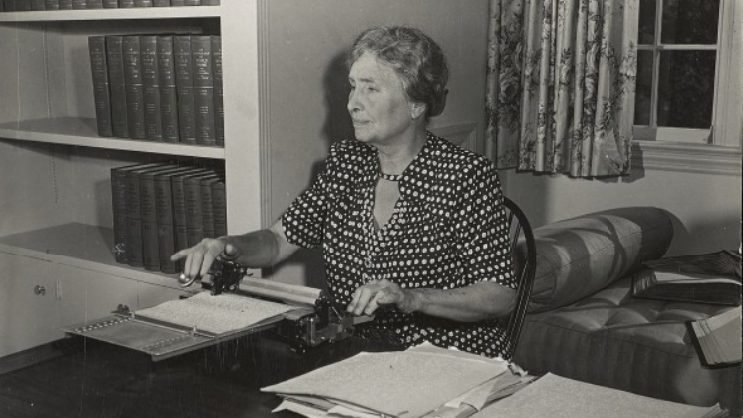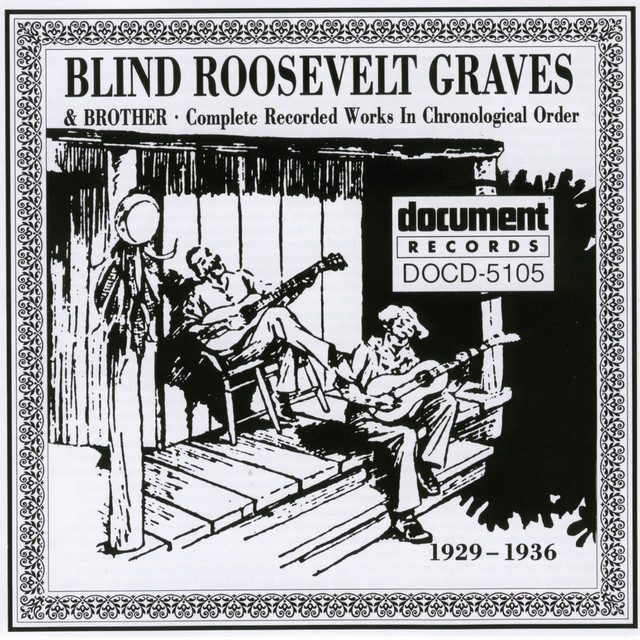To ensure gift delivery by 12/25, please place orders via UPS shipping no later than 12/17.
CloseContemplating Helen Keller’s Humanity

One of my favorite things about browsing through the AFB Helen Keller Archives here at APH—which we are doing right now to prepare for the Helen Keller sections of The Dot Experience—is Helen Keller’s brilliant humanity. Many people see Helen as a historical figure who did great things but don’t consider that she had emotions, feelings, and opinions like anyone else. The volume of letters, speeches, newspaper articles, and photographs in the Archive attest to that fact. Here is one story that illustrates what a wonderful and very human person Helen was.
In the late 1920s, the American Foundation for the Blind (AFB) had purchased the braillewriter and stereograph making departments from Cooper Engineering in Chicago. Cooper had been making the original Hall Braillewriter—the grandaddy of them all—but had tired of the business. AFB decided to redesign the old machine entirely and developed what became known as the Foundation Writer in their experimental shop in 1932. Typewriter firm Smith & Corona manufactured the new machine, which was a visual marvel. Inspired by aircraft designs of the 1930s, the Foundation Writer sported a bright, sleek aluminum chassis and all the bells and whistles, i.e., line-space lever, back space key, and margin stops similar to those found on standard typewriters.
Helen hated it from start to finish. Writing to Anne Sullivan Macy in 1930 during the design phase, she faulted her boss, Robert Irwin, and all of the AFB leadership.
“Apparently, you found it necessary to take the Braille writer out of the hands of our distinguished ‘Research Department’ and give it to one of the typewriter companies for reconstruction. Above all, the Foundation lacks leadership. There is no one to lead the movement in education or to mould public opinion regarding the problems of the sightless–no one with knowledge and constructive ideas about employing the blind.”
After the writer was introduced, she wrote Irwin with this backhanded zinger:
“It is splendid that the new Braille Writer is completed. It must be a good one, it has cost enough.”
And later, in 1935, writing to AFB Board Member Walter Holmes about her opposition to another perceived AFB boondoggle, you can almost hear the disdainful sniff in her voice.
“Furthermore, I have never seen the necessity of spending so much money as the Foundation has on the new Braille writer. I suppose I use a writer as much as any blind person in the world, and I get on very well with the old model.”
One of the cool artifacts in the AFB Helen Keller Archive is Helen’s own Foundation Writer, serial number 836. And to give Helen credit for being loyal, it does look like she used it. But we think Helen mostly used a Hall Braillewriter until it was destroyed in a fire at her home in 1946. She was in London at the time, and the Royal National Institute for the Blind presented her with one of their own machines, a Pyke-Glauser, which she apparently used for the rest of her life. In the end, by the way, Helen was right. The Foundation Writer was discontinued in 1947 after production of only 2,000 machines. It was heavy, finicky, and unreliable, but then so were most of the early braillewriters.
Helen was right about a lot of things. And she wasn’t always so nice about expressing it to her colleagues at AFB. I love that about her. Not a graven image, not a caricature, not a stereotype, but a fully formed, wonderfully human person.
Share this article.
Related articles

“Sacred Soil: The Piney Woods School Story” Keeps Legacy Alive
A new Hulu documentary, “Sacred Soil: The Piney Woods School Story,” highlights the Piney Woods Country Life School located in...

Blindness History Basics: Helen Keller Archival Collection
One of the most fascinating treasures at The Dot Experience is the American Foundation for the Blind (AFB) Helen Keller...

Blind Roosevelt Graves and the First Recorded Rock & Roll
Did you know that the first recorded rock n’ roll is attributed to a blind musician? The musical group, Blind...
